Waste explained
Project Training
Introduction
A goal of lean manufacturing and Just-in-Time is said to be the
accomplishment by a manufacturing process in which waste and wasteful practices
have been eliminated. A prime example of waste put forward by exponents of lean
manufacturing and JIT is "inventory". Examples of wasteful inventory include WIP
created due to the manufacturing of production lots in excess of net
requirements; and the production of non-conforming items. Wasteful activities
are said to be those adding "no value" to the customer's enjoyment of the
product, and include waiting time incurred by operators; the inefficient
movement and transport of materials, perhaps due to poor plant layout; and
process and machining activities originating in poor process and product design.
Waste in Exact Globe 2003 Enterprise
In Exact Globe 2003 Enterprise you can define a waste percentage in the BOM
of the finished good. Waste can be defined per item line and is defined as a
percentage of the total requirement of that specific item for this BOM. In this
document we will explain the waste functionality based on an easy example,
including the following steps (you can also use these steps as shortcut to go to
the explanation of that specific step):
- Example
- Important Settings
- Create parts
- Create the BOM
- Enter the production order
- Issue the production order
- Receive the production order
- Complete the production order
Example of waste in a production process
Waste can be considered as planned loss of (raw) material during the
production process. When you saw table tops you will not use all the wood that
you use to saw the table top(s) out of. In this case you will throw away the
leftovers. They will not add any value to your finished good. These leftovers do
not hold any value for you and can be considered as planned loss of material
during your production process: Waste.
Important settings
Before you start working with our manufacturing solution it is very important
that you link some general ledgers that will be used in the production process.
These important links are to be maintained via menu path: [System / General /
Settings / General Ledger Settings]:
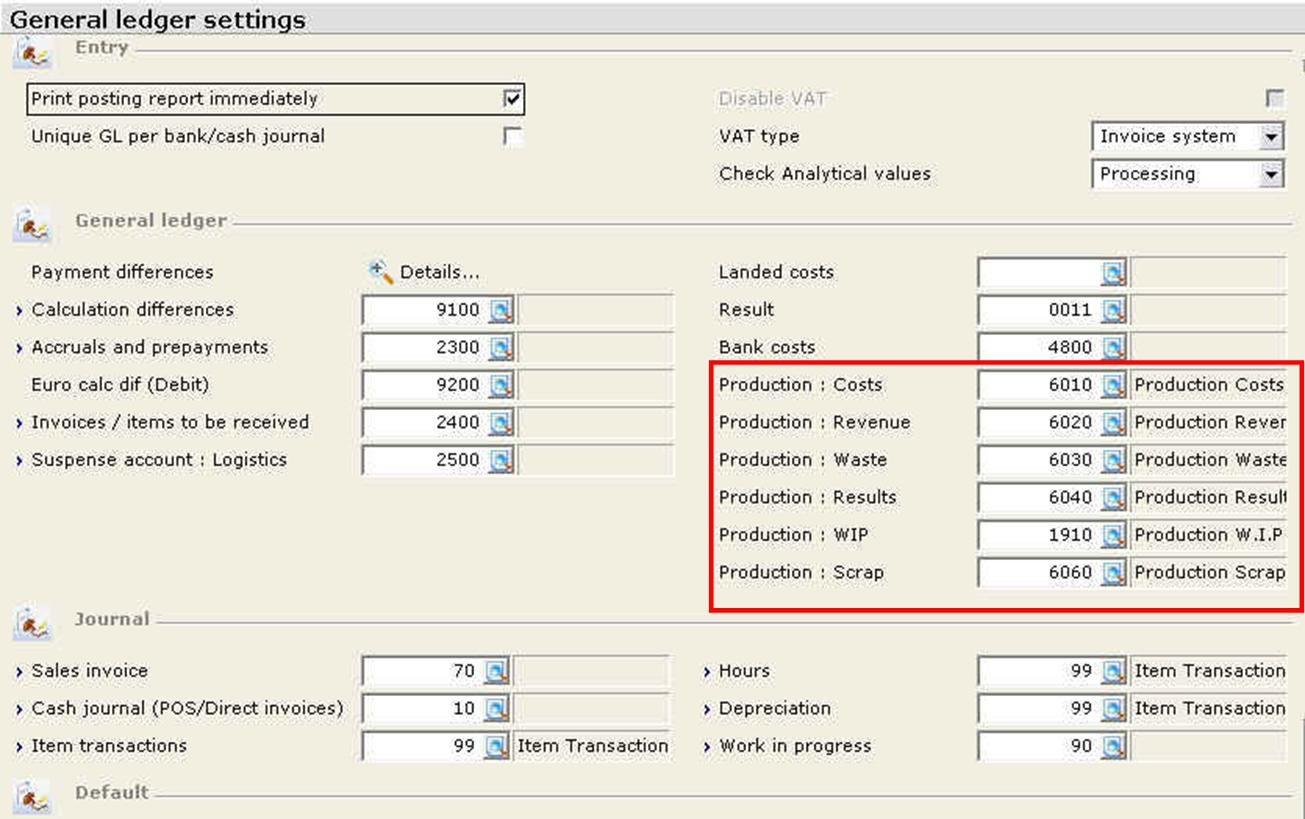
The only general ledger in the red square that will not be used in this
example is the general ledger 'Production: Scrap'. You can find an explanation
about the scrap functionality by using the hyperlink at the end of this
document.
Create parts
In this example we will produce a finished good 'X' which consists of two
parts: X-001 and X-002. The cost prices for these part items are 500 and 400
euro. The parts can be created via menu path: [Manufacturing / Setup / Items]:
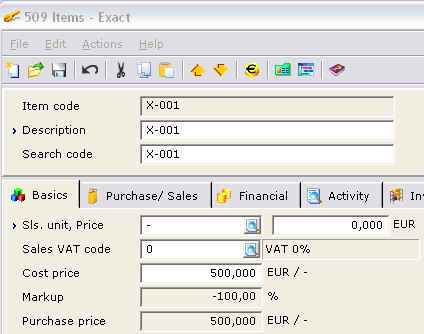
Create BOM
Before we start to plan producing item X we need to define what this item
consists of (which items are used during the production process). You can do
this by creating a BOM for the finished good via the item maintenance (tab
'manufacturing') of the finished good or via menu path: [Manufacturing / Setup /
BOM]:
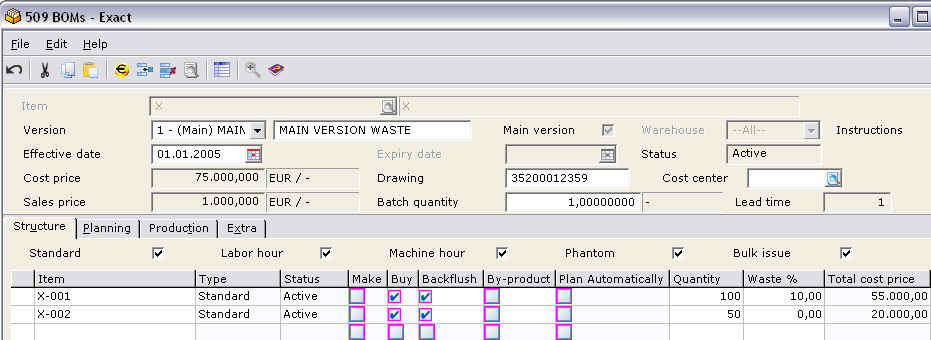
In this example, item X (finished good) consists of 100 items X-001 and 50
items X-002. In the BOM lines you will also have the column 'Waste %'. In this
column you define the percentage of materials that you will need extra to
be able to produce your finished good. This percentage is a planned loss of
materials in the production process. In this case we say we need 10% extra of
item X-001. The total cost price for this item is (100 x 500) + (10 x 500) =
55.000,-.
Enter the production order
Via menu path: [Manufacturing / Entries / Production orders]. In the
production order entry screen you will see that there is a column 'Waste %' in
the order lines. At the time of entry, you are able to change your planned loss
of materials:
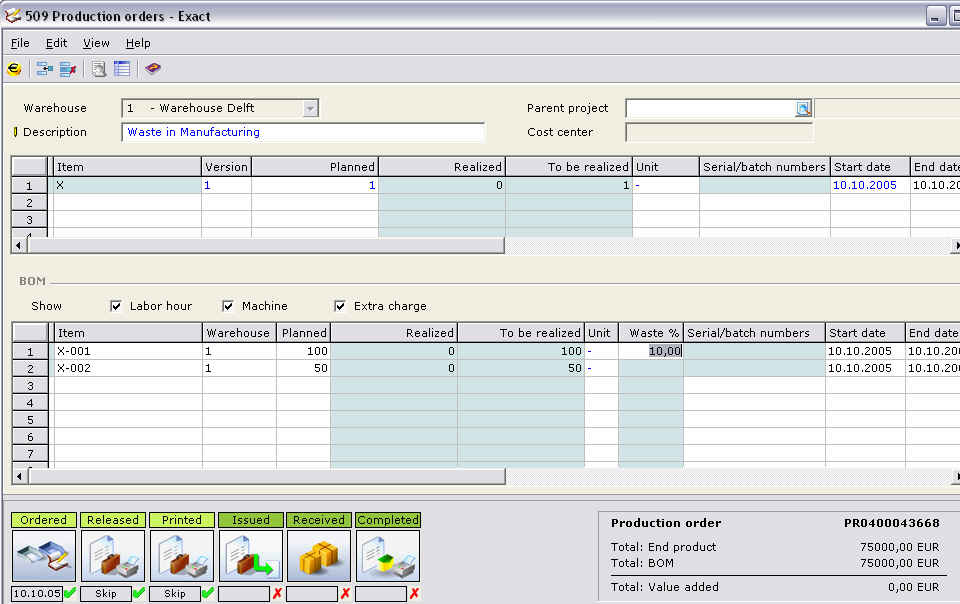
Issue the production order
At this moment the production is still planning and nothing has been realized
yet so there is no direct impact on your financial administration. The first
step that will have an impact on your financial administration is the issue of
the raw materials. For this 2 line production order, the system will cerate 3
lines for the fulfillment (issue). Besides the two regular lines, the system
will create an extra line for the waste quantity (2nd line in the print screen).
This quantity can still be changed when you issue your materials:
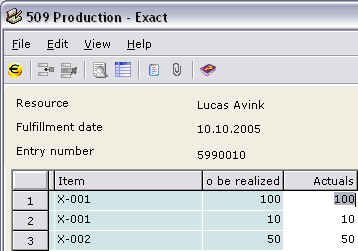
When you issue the parts there is a physical movement of stock. Therefore
the system will create a journal entry that will have an impact on your
financial administration and on your stock positions. When you issue the
parts, the system will create work in progress and create a balance on the
general ledger that you defined as being your 'GL Waste' in your general
ledger settings. The financial entry looks like this:

As you can see from this entry, the system did not create work in
progress for your waste. The waste is booked against your general ledger
waste:
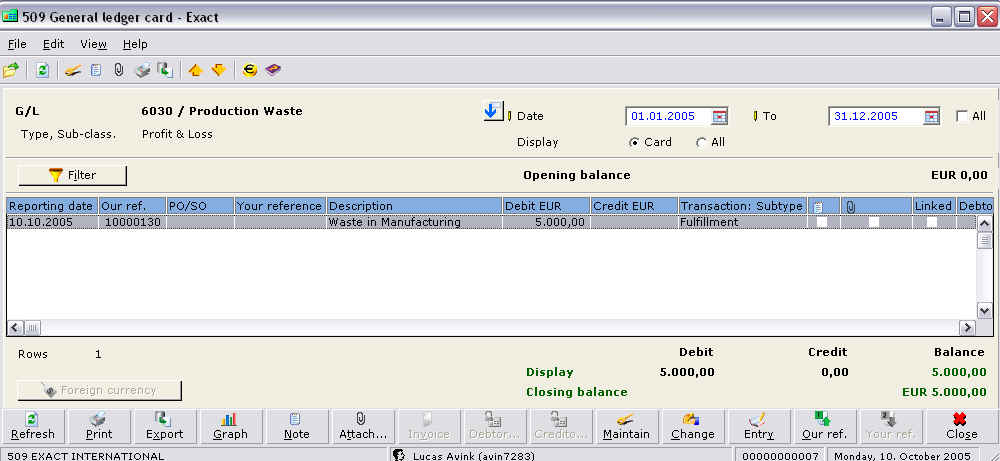
Receive the production order
Next step in the production process is to receive your finished good(s). This
is again a physical movement of stock. Therefore the system will create a
journal entry that will have an impact on your financial administration and on
your stock positions. The financial entry that is created for your receipt will
have an impact on the stock GL for your finished good and it will reduce the
work in progress:

Because you did not complete the production order yet, there is still a
balance on your work in progress account for the waste of the production order:
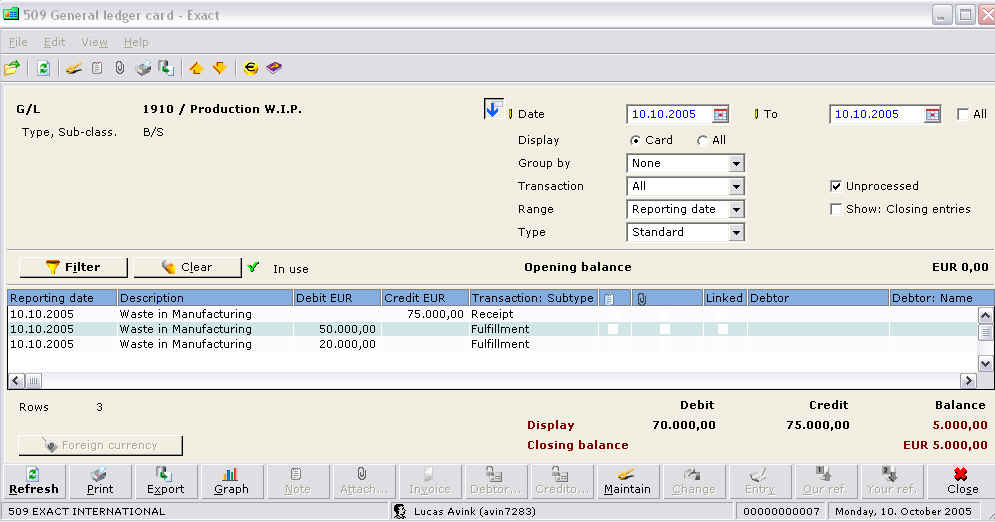
Complete production order
The final step in the production process is to complete the production order.
You can do this at the time you receive your finished good or you can choose to
do this later via menu path: [Manufacturing / To be processed / Complete]. When
you complete the production order, you will take the results of this production
process and your work in progress account and your waste account will be in
balance again. The system will create the following entry:
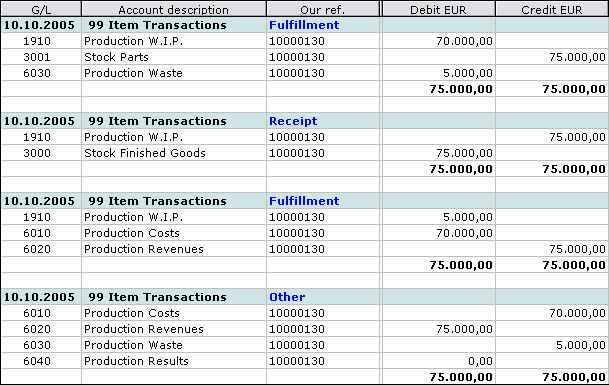
As you can see there is no balance anymore on your WIP account:
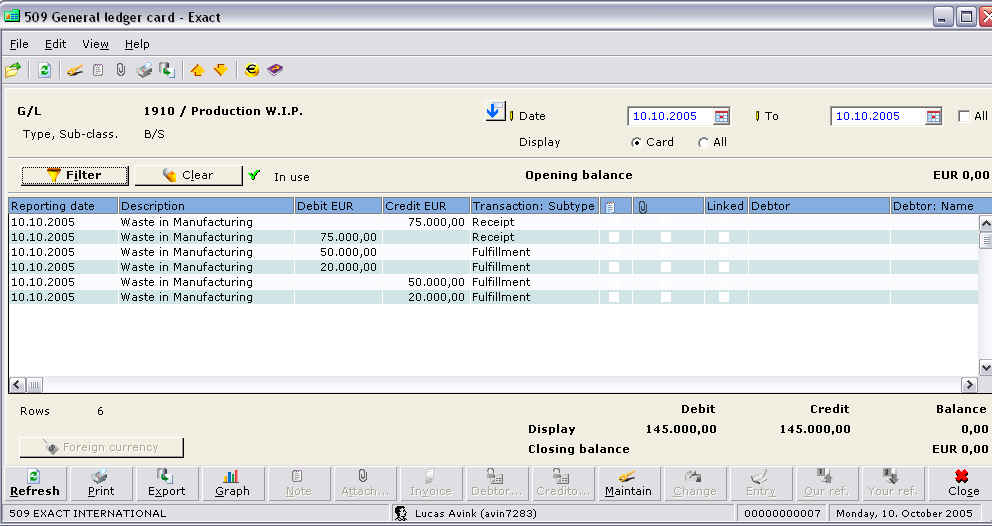
Just like the WIP account, the waste account is now also in balance after you
have completed the production order:
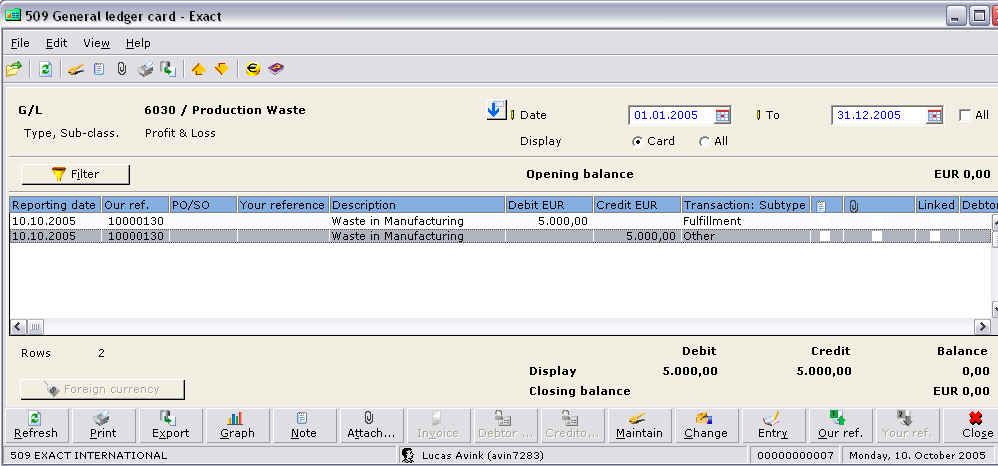
Related documents:
-
Scrap and waste, what is the difference? document 11.806.458
-
Scrap explained, document 11.806.535
| Main Category: |
Support Product Know How |
Document Type: |
Support - On-line help |
| Category: |
On-line help files |
Security level: |
All - 0 |
| Sub category: |
Details |
Document ID: |
11.806.545 |
| Assortment: |
Exact Globe+
|
Date: |
26-09-2022 |
| Release: |
|
Attachment: |
|
| Disclaimer |